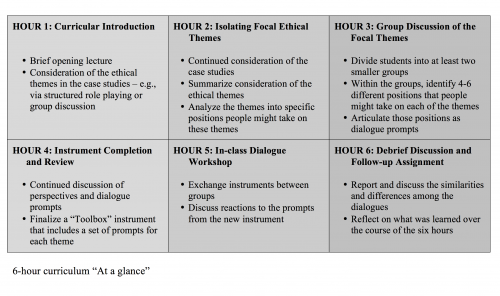Develop your skills as a professional scientist and environmental decision-maker.
The Values and Responsibility in Interdisciplinary Environmental Science curriculum has been developed by a team of philosophers, social scientists, and environmental scientists who recognize that socio-environmental problems are often crucially dependent on values and policy considerations. We have relied on our experience and expertise, supplemented by a national survey of environmental science instructors (Hall et al. 2017), to craft a curriculum that addresses the values and policy dimensions of interdisciplinary environmental science problems. Drawing on educational best practices and the Toolbox dialogue approach (http://tdi.msu.edu/), this curriculum enables students to evaluate and discuss the values and policy landscape of their particular interdisciplinary environmental science program.
COURSE DESCRIPTION
Our curriculum provides two teaching modules designed to be incorporated into existing interdisciplinary environmental science graduate courses. The lessons, alongside the scientific curricula instructors are already teaching, are intended to prepare interdisciplinary environmental science graduate students for some of the ethical challenges they will face in their careers by emphasizing the importance of the accountability of researchers in professional sciences to both decision-makers and non-research communities. Based on contemporary educational theory, our curriculum is committed to the idea that students best learn conceptually challenging ethical content through structured peer dialogue and guided self-reflection. Our approach derives its dialogue-based workshop model for interdisciplinary environmental education from the NSF-supported Toolbox framework, which works to enhance communication in interdisciplinary research.
LEARNING OUTCOMES
Did you use our curriculum?
We’re always looking for feedback to improve our curriculum.
Tell us what you thought.


